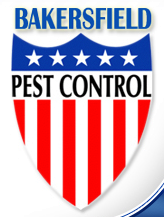Bed bugs are likely the creepiest and worst creatures to infest your home. Bed bug removal is often extremely difficult and can be costly because of the scope of the infestation. Bakersfield Pest Control can be dispatched for any size bed bug infestation and is guaranteed to do a complete and thorough job.
BED BUG FACTS
- Human bed bugs are found throughout the world and are significantly increasing in numbers in North America
- During the last decade, there has been a significant increase in the number of bed bug infestations reported from homes, resort hotels, apartments, universities and cruise ships
- Human bed bugs are constantly being transported and dispersed in luggage, bedding and other items such as bedroom furniture
- Once transported to a dwelling, bed bugs typically live in cracks and crevices in the bedroom and feed on people during the night time
During travel, before you check into a hotel, check into the mattress. Carefully remove the sheets and examine the head section of the bed, look at the seams of the mattress as well as both sides of the head board. If you see any small insects in either of these locations, they are probably bed bugs.
Recognizing bed bug bites
Frequently, the first evidence of the presence of bed bugs is the sudden appearance of very itchy bites on your torso. It is important to seek medical attention if bites alone are the only evidence of bed bugs. Dermatologists may recognize skin rashes, allergies and other conditions that are not insect bites.
Even though bed bugs are small, they can be readily seen with the naked eye. Immature bed bugs are light yellow in color unless they have recently fed on blood and then they are darker in the middle. After a recent feeding, you can almost see the red color of blood inside. Adults are reddish brown and they also turn darker after a blood meal. They are wingless, oval and flattened in appearance and crawl at a steady rate.
Bed bugs are active at night when they leave their daytime resting place deep inside cracks and crevices to seek out human blood. If bed bugs are seen during the day, it usually means that their hiding location has been disturbed, they have contacted a pesticide, or else they are very hungry and are desperately seeking a blood meal. Adult male and female bed bugs, as well as nymphs (young), feed on blood. By checking the bed linen in the middle of the night you have the best opportunity to find bed bugs on the move. Bed bug bites are normally two or three in a row and often blood spots are deposited on the sheeting. Any nearby crack or crevice can serve as a daytime refuge for bed bugs. Look for bed bugs under folds in mattresses, along seams and in between bedposts and bed slats. Other places to look for bed bugs during the day include behind baseboards, in night stands, inside pillow cases and inside any piece of furniture that is located adjacent to the bed. When large numbers of bed bugs are present, they produce a distinctive pungent odor. Numerous dark fecal spots on linen or near cracks are another indication of a bed bug infestation. If only one or two bed bugs are found, it is difficult to estimate how many other bed bugs are in hiding. Large infestations of bed bugs have a tendency to disperse to other locations in the building, especially if the host person vacates their room for a period of time.
How to control bed bugs
The first step in control is to eliminate the possibility of bed bugs physically climbing over a mattress or bed to feed. Pull the bed away from shelving or the wall and coat the legs of the bed with a band of Vaseline or mineral oil with a band about 2 inches wide. Use effective means to prevent or exclude bed bugs from the sleeping area. This could
include keeping a zone around the bed “bed bug-free” by careful examination and removal of bed bugs with a stiff brush and vacuum and by caulking cracks and by placing a barrier of chalk or silica aerogel around the bed posts at floor level. Double-sided carpet tape may be effective in trapping bed bugs and excluding them from sleeping areas. Clear sticky tape is a good way to capture individuals for later identification.


















